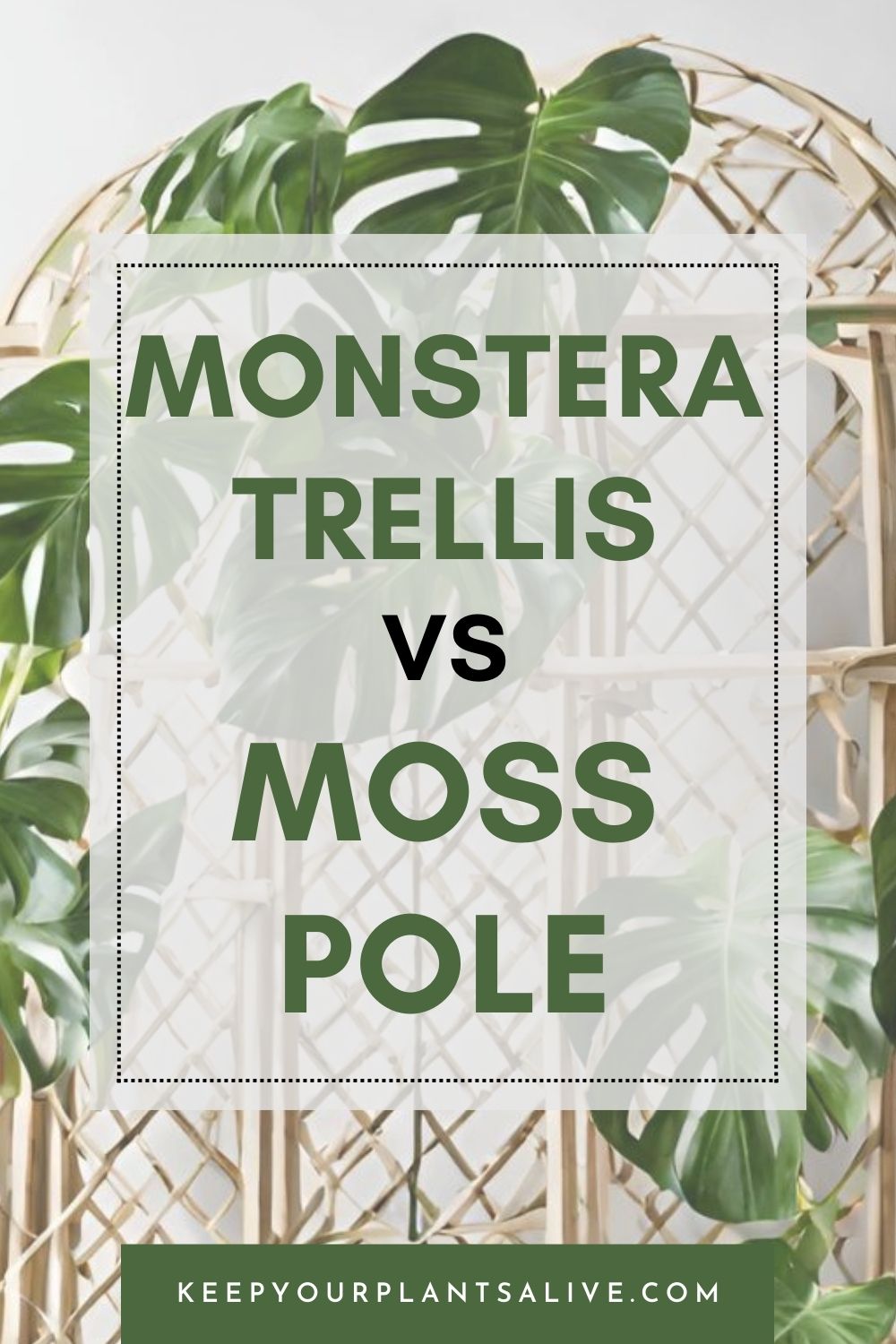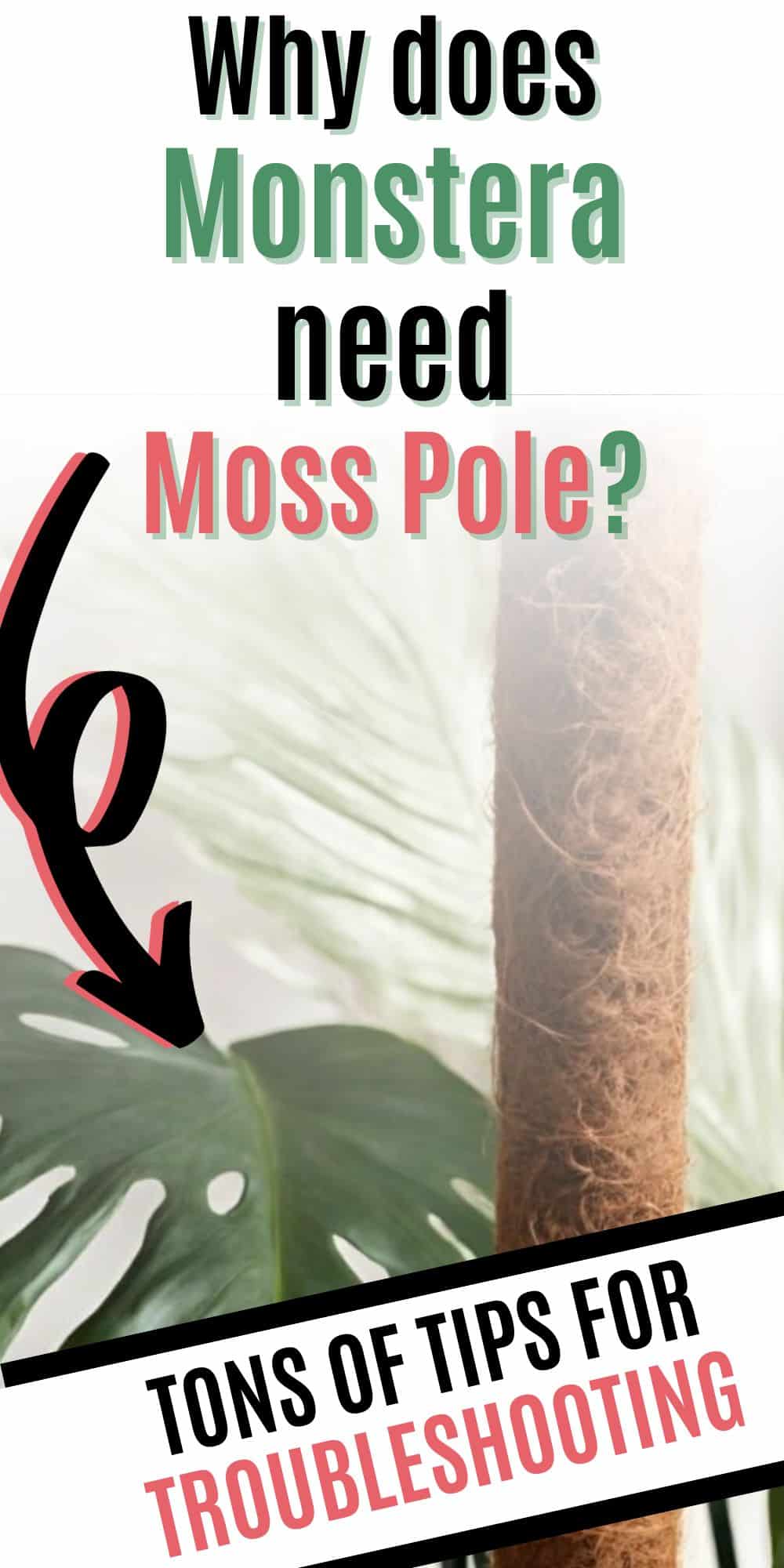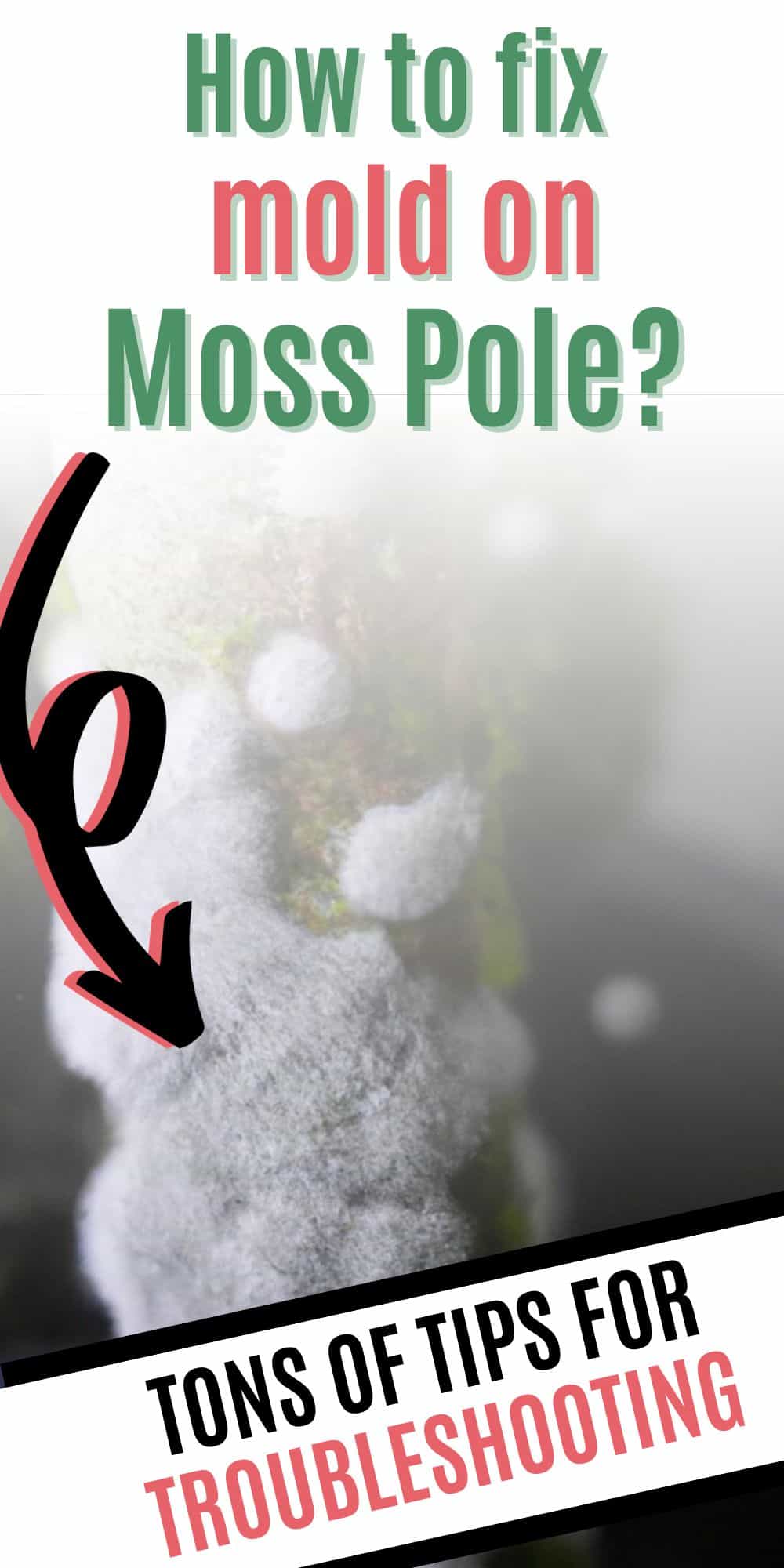Debating between moss pole vs coir pole for your climbing plants? Discover the best choice for your indoor garden with our comprehensive comparison guide!
Moss poles and coir poles are two of the most popular types of houseplant supports.
However, each one of them has its unique advantages that make it more suitable for a specific type of user.
To help you understand the differences between moss pole vs coir pole, this article will walk you through an in-depth look at the two poles. Let’s dive right in!
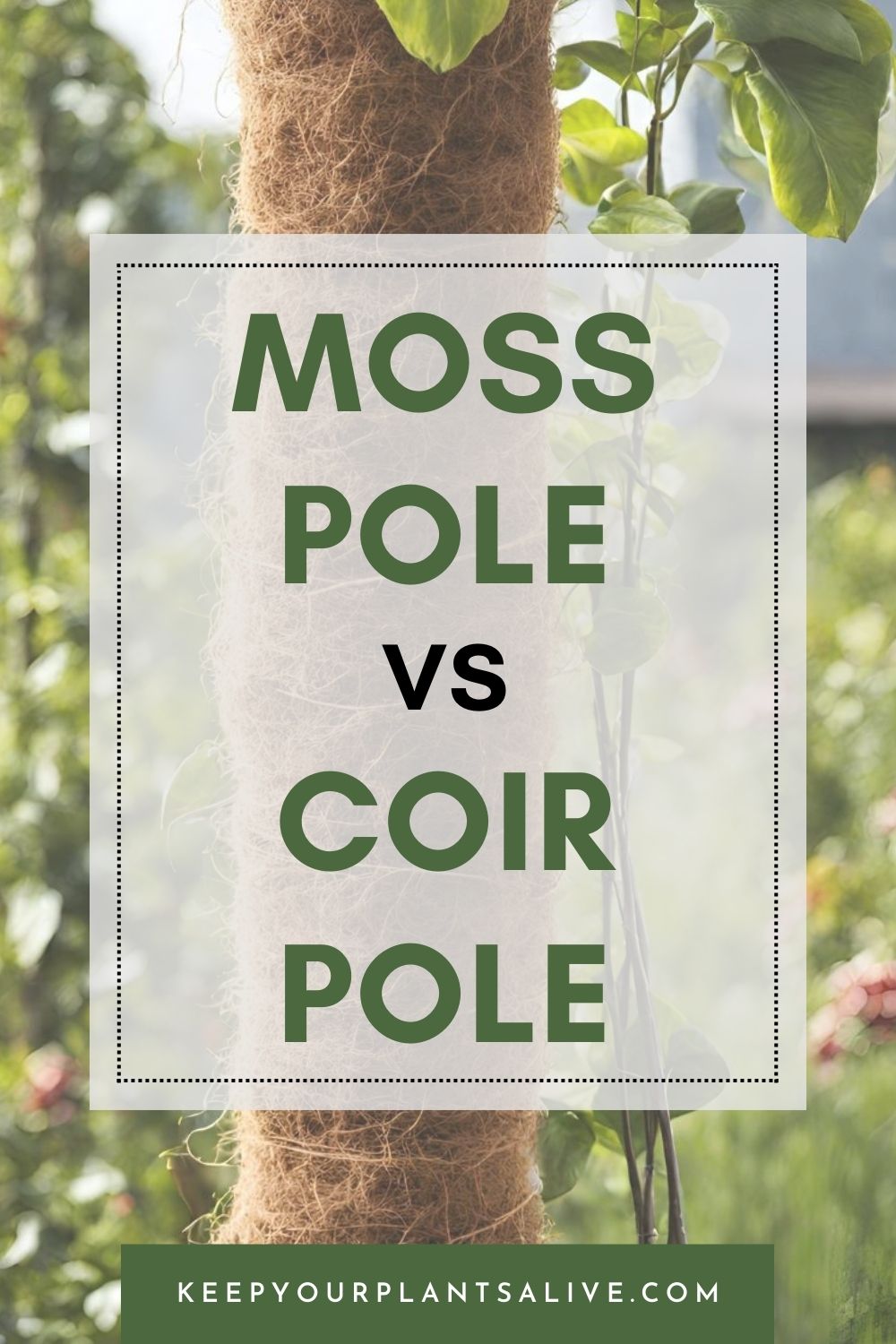
A Brief Overview of Moss Poles
A moss pole is a vertical support structure made using soaked sphagnum moss wrapped around PVC pipes or wooden poles, hence the name.
This type of moss has a remarkably high moisture-holding ability, which allows tropical plants with aerial roots to attach themselves and draw in moisture and nutrients to nourish themselves.
The moss is attached to a pole to provide durability. This makes it also ideal for climbing plants, as the pole provides the structural support necessary for the vines to grow upwards.
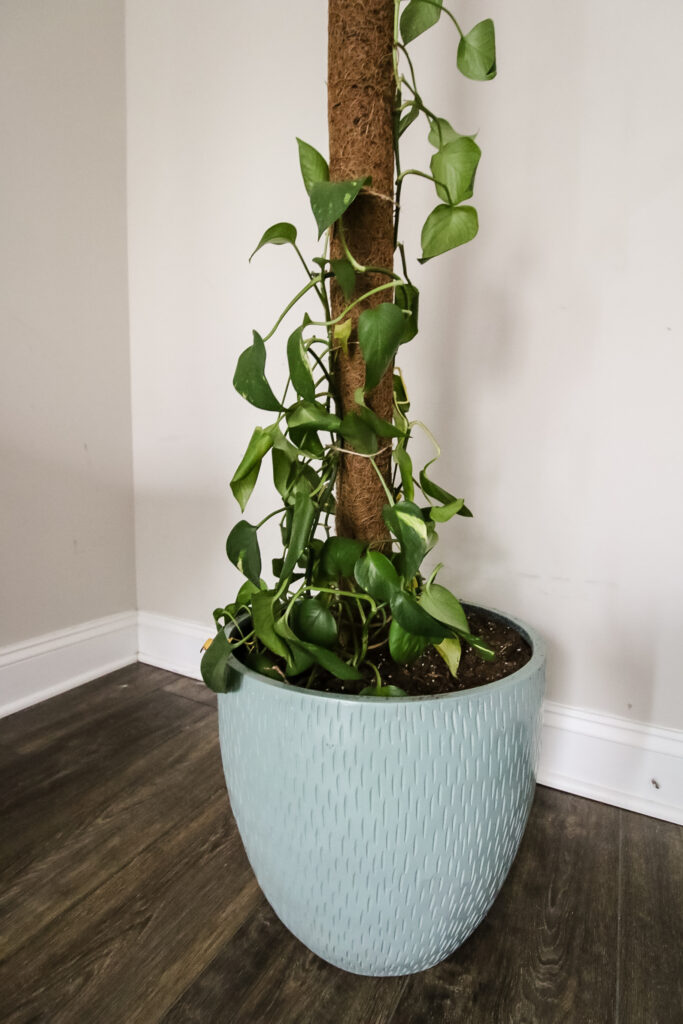
Advantages of Moss Poles
Moss poles are commonly used with house plants because they provide a wide range of benefits. Here’s a quick look at them:
- Excellent Moisture-Holding Abilities: According to studies, sphagnum moss is capable of holding up to 20 times its weight in water. This makes it a perfect choice for vining plants with aerial roots like Monstera and Philodendrons.
- Readily Available: There are over 380 different species of sphagnum moss. Many of these species are readily available in gardening stores. They also come in different shapes and sizes to suit different needs and plant types.
- Perfect for Small Spaces: Thanks to their high moisture-holding capacity and small size, moss poles can train widely growing plants into narrow vertical growth, making them ideal for smaller spaces.
- Highly Resistant to Bacteria and Pests: Despite its dense look, moss poles are surprisingly porous and lightweight. This makes them naturally resistant to pests and bacteria that result from poor air circulation.
- Natural Look: the fresh look of sphagnum moss makes it an aesthetically pleasing combination with a wide variety of plant species.

Common Issues
Despite its various advantages, moss poles also have some potential downsides that you need to keep in mind. Here’s what you need to know about them:
- Requires Frequent Upkeep: Although moss poles retain more moisture than coir poles, they also need to stay hydrated at all times to stay alive. This means providing high humidity and misting the pole frequently to make sure it doesn’t dry out.
- Not Flexible: Since moss is attached to a wooden or plastic rod for support, they’re usually rigid and available only in the form of straight poles. This may limit their usability in some applications that require flexibility.
- A Bit Pricey: Technically, moss poles are fairly affordable. However, they’re not the cheapest option to consider, especially when you compare them to coir poles.
When to Use Moss Poles
Moss poles provide an excellent advantage to houseplants that are native to humid environments.
For instance, tropical plants and epiphytic species that need plenty of moisture and physical support to grow will benefit greatly from moss poles, such as:
- Monstera
- Philodendrons
- Rhaphidophora
- Pothos
- Creeping Fig
- Hoya
A Brief Overview of Coir Poles
Coir poles are similar to moss poles in terms of concept, but instead of sphagnum moss, they’re made of coconut coir.
This natural fiber is made from the husk of coconuts and is known for its decent water retention capabilities and remarkable durability.
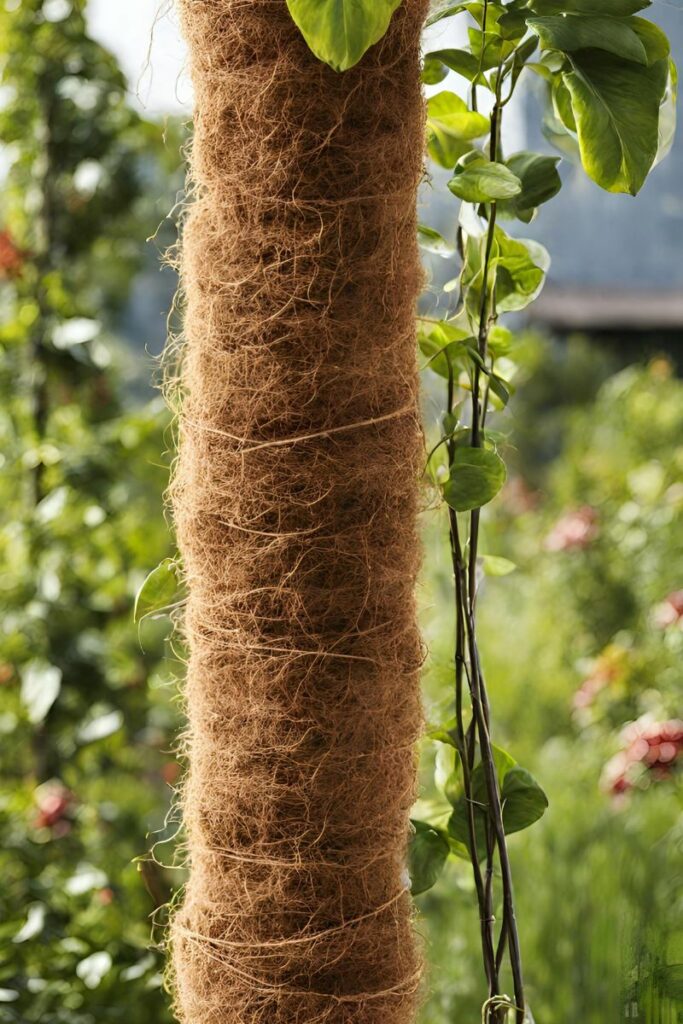
Advantages of Coir Poles
- Highly Affordable: One of the main advantages of coir poles is that they come at a decent price, as they’re significantly cheaper than moss poles.
- Sturdy and Flexible Support: Coir poles are also more durable than moss poles, so they’re extremely reliable when it comes to providing structural support for creeping vines.
- Eco-friendly: Coconut coir is 100% biodegradable and compostable with a neutral pH level, making it a safe and sustainable choice that benefits from the material’s abundance.
- Requires Minimal Maintenance: Unlike moss poles, coir poles are not living plants that will suffer when moisture is below a certain level. This makes their upkeep much easier for first-time users.
Common Issues
Although coir poles are quite promising, they still have their issues. Here’s a quick look at some of them:
- Limited Moisture-Holding Capacity: compared to sphagnum moss, coconut coir has lower water retention capabilities. In other words, it won’t be able to hold as much moisture and nutrition to sustain epiphytic plants.
- Difficult to Work With: Coconut coir can be quite messy because of its crumbly nature. This also makes it a bit difficult to work with, especially if you want to make the pole on your own or shape it for your climbing vines.
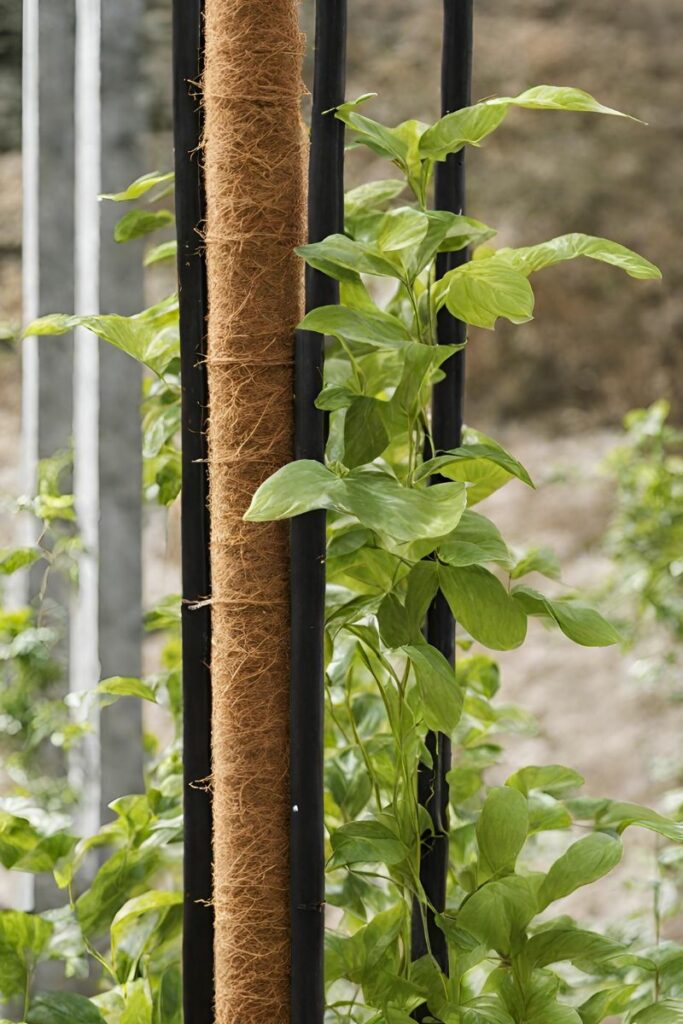
When to Use Coir Poles
Coir poles are fairly similar to moss poles in many aspects. This makes it suitable for all kinds of tropical plants that create aerial roots to seek moisture and nutrition.
However, the true advantage of coir poles is their flexibility and sturdiness, as they’re much more durable than moss poles.
For that reason, they’re perfect for climbing varieties like Ivy plants, Trailing Begonia, Arrowhead Vines, and Bougainvillea.
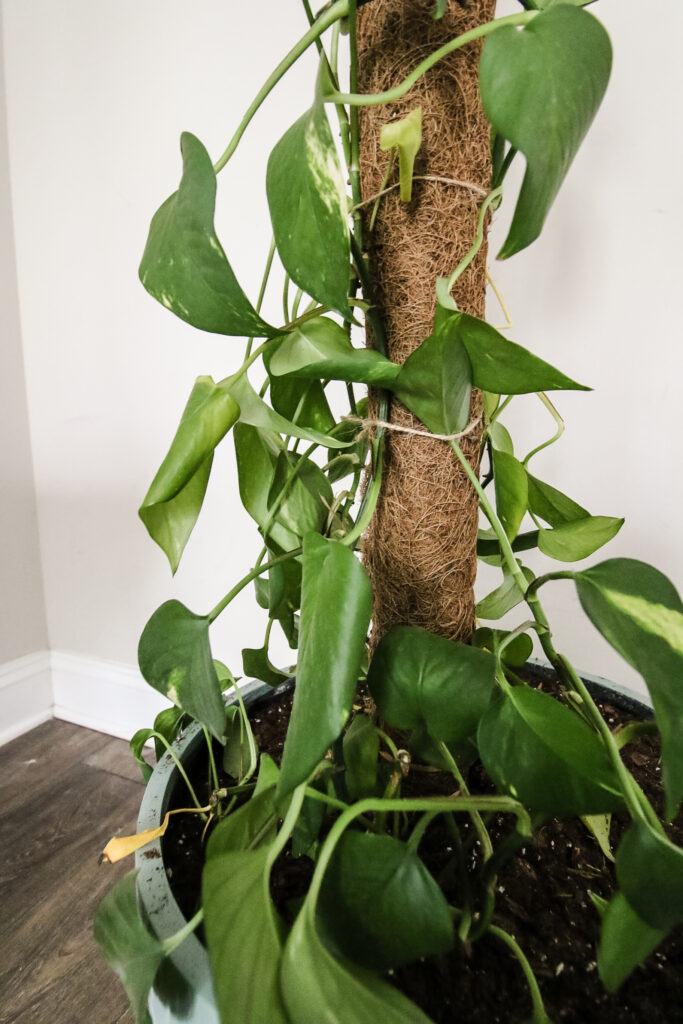
How Do Moss and Coir Poles Compare to Each Other?
Moss poles are usually thicker and specifically used for their moisture-holding capabilities.
On the other hand, coir poles are thinner and longer, and they are mainly used for their flexibility and durable support.
Coir poles are also more sustainable, as they utilize the husk of coconuts. Meanwhile, harvesting sphagnum husks can disturb ecosystems where they grow.
All in all, if you’re trying to mimic the natural habitat of your epiphytic plant by providing the plant with a source of moisture and nutrition, you should go for moss poles.
However, if you’re mainly looking for support for the vines, coir poles will give you more creative freedom.
Before you go...
As you can see, moss pole vs coir pole are highly effective when it comes to supporting houseplants and providing them with the necessary moisture to thrive.
As a general rule, moss poles are better suited for smaller plants with aerial roots, while coir poles are better for larger plants with climbing tendencies.
If you want to find out more about the proper techniques to care for your houseplant, click here to download this printable quickstart guide!
Thanks for reading!


Hey there, I'm Morgan, a houseplant enthusiast from sunny Charleston, South Carolina. Growing up surrounded by my mom's lush orchids and African violets, I discovered the magic of bringing nature indoors. Thanks to the pandemic, I delved deeper into houseplants, discovering their power to uplift moods and transform spaces. I'm here to spill all my secrets, helping you pick the perfect houseplant - and make it happy. Let's keep your plants alive, together! 😊

